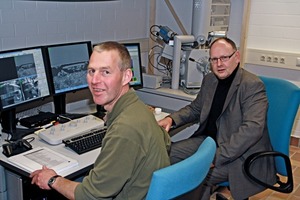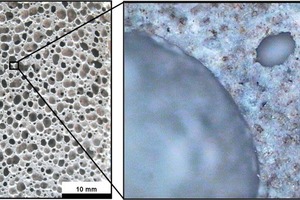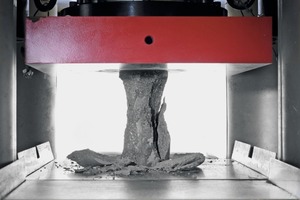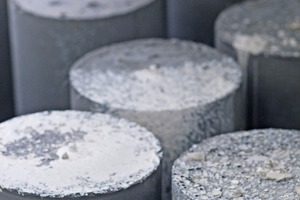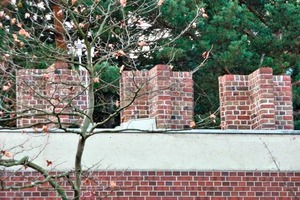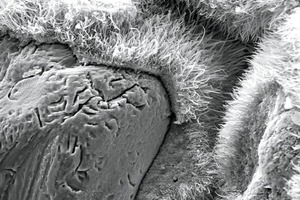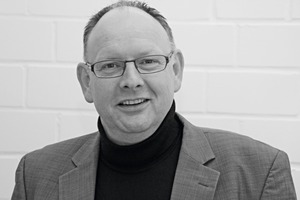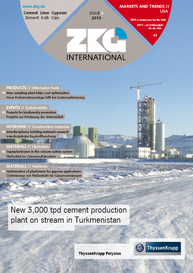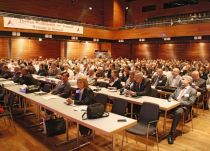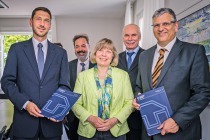Interdisciplinary building materials research using multiscale approaches
High-performance concretes with multifunctional properties had been developed and successfully used for the fabrication of individual components and the building of complete structures in the department during the preceding years. These materials make it possible to produce these in a significantly more slender, more durable and more environmentally friendly form, but at more rational cost than comparable items made of conventional concrete, particularly when their entire life-cycle is taken into account. The department, which is an integrated part of the IKI Institute of Structural Engineering, pursues a holistic approach in the optimisation of such high-performance materials. Within its work team, engineers, natural scientists and materials scientists jointly research into innovative inorganic mineral materials up to the stage of their practical testing in structures. ZKG INTERNATIONAL spoke to Prof. Middendorf on the current and future orientation of the department.
Thanks to my predecessor, Prof. Schmidt, and his former senior lecturer – and current professor at the Tech-nical University (TU) of Berlin – Prof. Dietmar Stephan, the department has also gained an excellent reputation in the building materials sciences and has established extensive experimental facilities which will provide my team and myself with numerous opportunities for extremely exciting research. In addition to the facilities for the microstructural analysis of building materials, I am also able to make use of the faculty’s mechanical testing equipment (at AMPA and the IKI), which further extends our capabilities. It is not only the experimental facilities which are scientifically stimulating, however – my department is remarkable, in particular, for its highly qualified and motivated interdisciplinary staff, a team which is also notable for its high level of independent initiative. If you take these potentials as a whole, you will very quickly realise that my new department most certainly provides a firm basis for the future pursuit and co-development of building materials research at the very highest level.
Unlike my predecessor, I come from a natural sciences background, so I also have a more fundamental research orientation. One ever-recurring element in my research is “microstructure”, which influences the essential properties of building materials – you only need to think of mechanical properties, and the durability aspect.
The two main emphases of my research activities, “Development and application of building materials with systematic properties” and the “Interaction of additives and admixtures with inorganic mineral binders” are also closely linked to the quantitative description of microstructure. And, in addition to the development, production, optimisation, testing and application of UHPC which we just mentioned, thanks to my scientific work at the Technical University of Dortmund, I am also able to build on my many years of experience in the field of high-strength air-curing foamed concretes. Since no substantiated constitutive laws for foamed concretes have as yet been scientifically elaborated, I will, in the future, be working, jointly with Prof. Dr.-Ing. Just, of the EBZ European Training Centre for Property and Housing Management in Bochum, and with other specialist colleagues, on projects for the optimisation of minerally bound foams and on the multiscale modelling of the behaviour of porous building materials.
In the future, I’ll be using microscopic and calorimetric methods to investigate the influence of various organic and inorganic admixtures as inhibitors on crystallisation processes, and on those of gypsum crystals, in particular, in greater depth. We’ll use this nanoscopic approach to research setting process reactions, and their influence on the size, character and habit of the resultant gypsum crystals, and thus on the porosity of the structure.
Structure also influences significant characteristics variables of calcium silicate bricks, and not only brick strength, but also, and in particular, bulk density, which is extremely relevant in structural noise suppression. We are currently studying the modification of C-S-H phase formation when seed crystals are added, in the context of a research project. In another project, my team and I are researching into the influence of humic substances on structure formation in calcium silicate bricks.
In the past, the focus has been almost exclusively on strength, stability and durability; nowadays, one has also to take the low-energy production, compatibility, environmental impact and recyclability of building materials into account. Due to increasing social awareness, sustainability, in terms of resource-conserving building materials and methods, is increasingly becoming an important element in all construction projects and in my department, we are currently intensively working on developments in the field of self-compacting filling materials and other projects. So our aim must be to reduce the primary energy input, environmentally relevant emissions, and the production costs of binders, without sacrificing quality and versatility of application.
Another important part of my future activities will be the durability and preservation of buildings. Buildings and other structures are high-value assets that require correct and careful maintenance and repair. Even nowadays, they continue to be “repaired” using incompatible building materials, which can result in high consequential costs, on the one hand, and loss of building fabric, on the other hand, something particularly tragic in the case of culturally and historically important buildings. There is, therefore, a great need for thoroughly scientifically founded, practically orientated support for the technical and economic optimisation of building repair products based on mineral building materials. We are currently working on a number of projects for the characterisation of masonry decay processes in historic structures, on salt crystallisation and on the development and testing of building materials for repair purposes. We are also active in drafting repair strategies for historic properties, and are, in addition, closely linked to the Institute for Stone Conservation (IFS), in Mainz.
We must, also, make even greater efforts to find potentials for using building shells for energy recovery.
It will also be necessary to study materials recycling still more intensively in the future. In my opinion, far too little attention is focused on building materials recycling even now, despite all the analyses of the energy efficiency of structures. Many building materials, and multicomposite building materials, in particular, can only be landfill dumped when their useful life has ended, because they cannot be separated into individual materials. Mono-material systems harmonised with each other could, on the contrary, offer the same performance, but combined with significantly better recyclability. It is, for example, conceivable that building shells could be constructed of thin load-bearing UHPC “skins” which would then be enclosed in the TU Dortmund’s cement-bound foamed concrete, ensuring extremely efficient thermal insulation. The visible surface of the component could consist of a sealing and decorative cement rendering. After demolition, the result would be a recyclable building mono-material that can be kept in the materials cycle without complication.
Roof structures for single-family and multi-family residential buildings would be conceivable using such multifunctional concretes, for example. One benefit would be the fact that the geometrical and design versatility of concrete as a building material would make it possible to integrate photovoltaics systems directly into the concrete roofing elements. It goes without saying that this form of modular building would also need to permit aesthetic variations to gain social acceptance.
Finally: The primary aim of all building material development in future will be the conservation of energy and resources – this is a clear and unmistakable trend.

